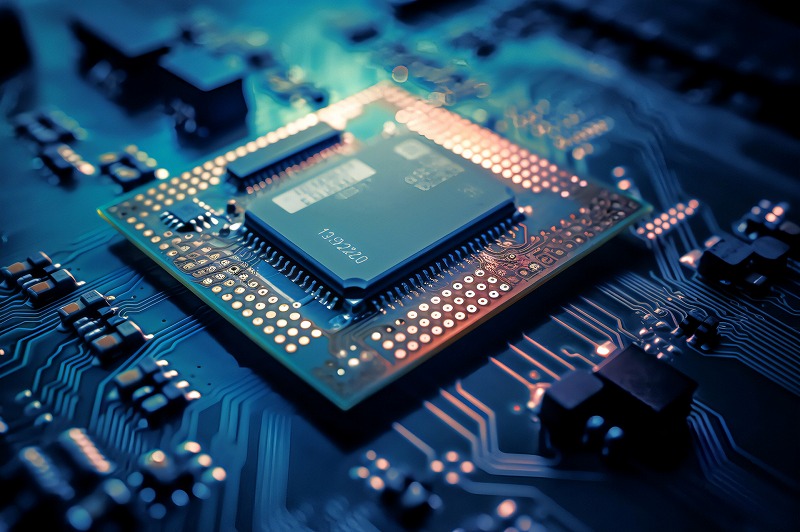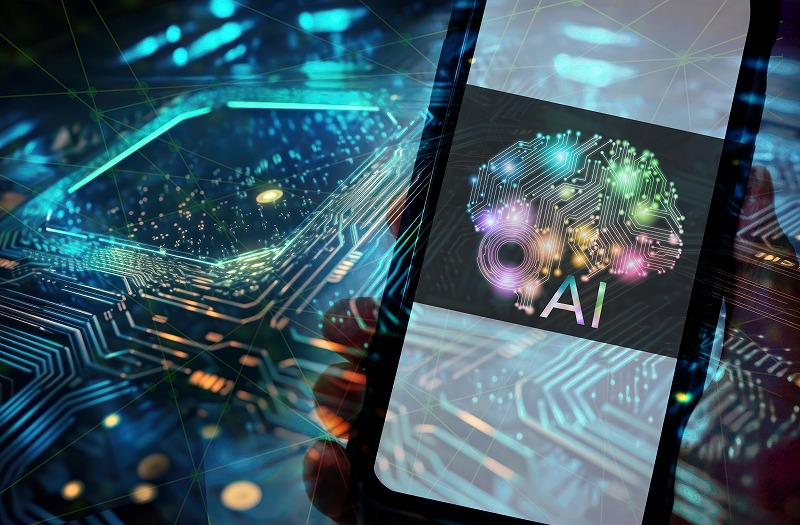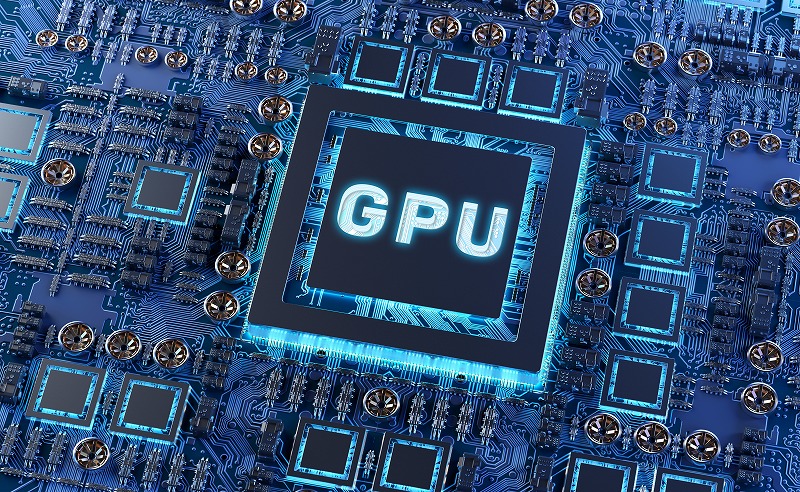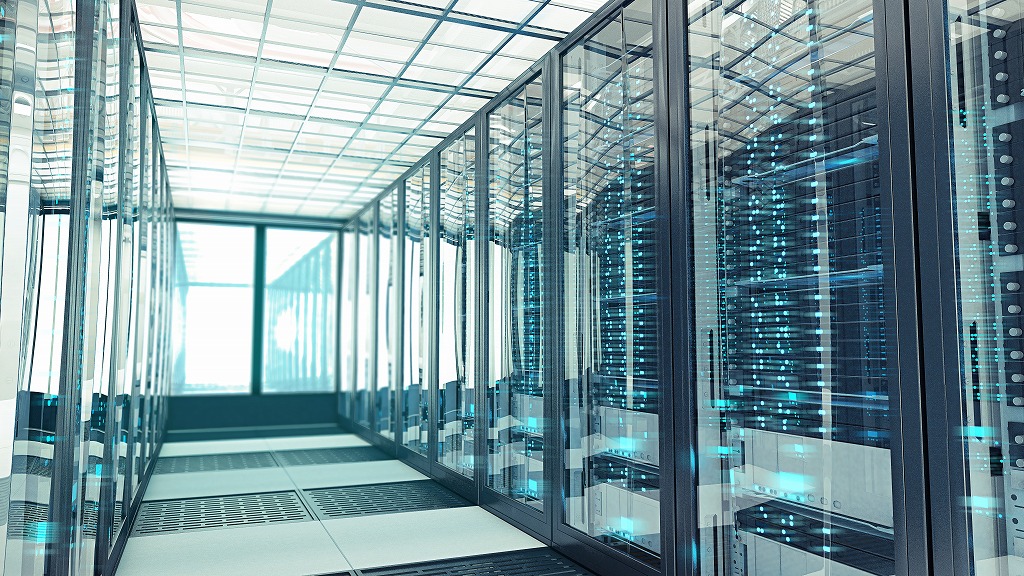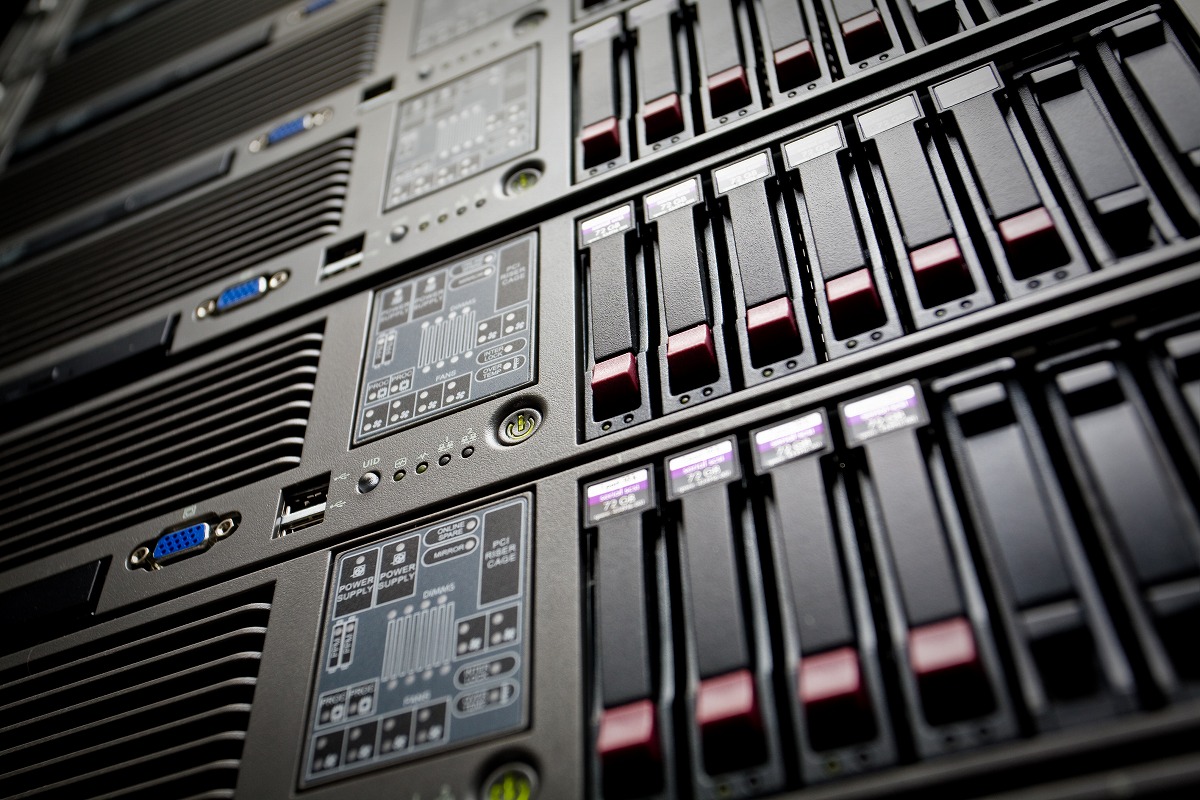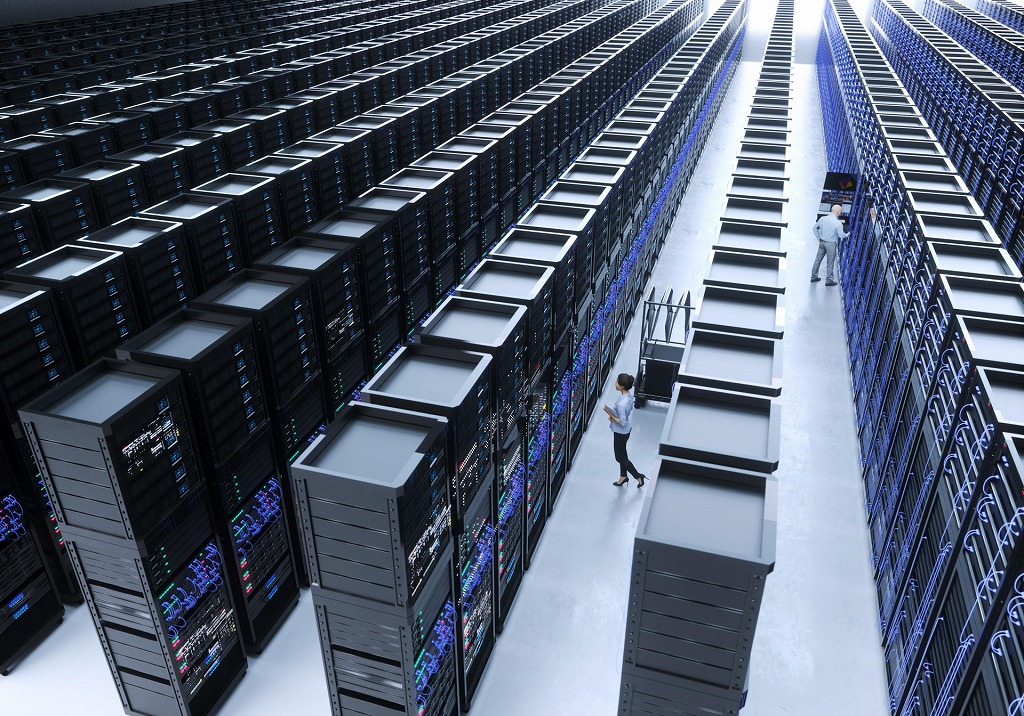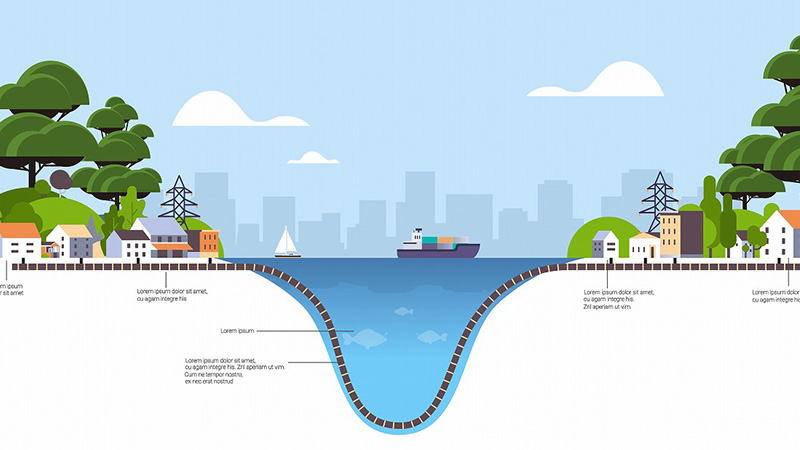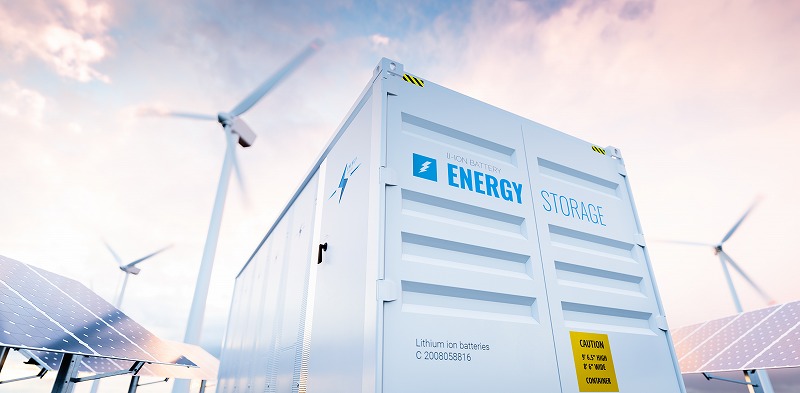
News & Topics
In March 2024, NVIDIA, a leading semiconductor company, announced the launch of the next-generation AI semiconductor “Blackwell B200” GPU.
What is B200?
“Blackwell B200” is a combination of two chips of the same size as the company’s previous products, and the number of transistors that greatly affect performance is 208 billion, compared to 80 billion in the previous main product “H100”. Approximately 2.6 times.
What is the price of B200?
The B200 is expected to ship in the latter half of 2024, and while pricing is still unclear, it is expected to be higher than the “H100” and “H200.”
However, the announcement that major cloud service providers such as Amazon, Google, Meta, Microsoft, Open AI, and Oracle are expected to adopt this new semiconductor underscores the significant impact this technology will have on the industry.
NVIDIA is not only accelerating the advancement of AI technology but is also solidifying its position as a key player in the industrial sector.
As the processing power of GPUs improves, there is no doubt that AI will be increasingly utilized. The development of generative AI is also expected to increase the production of content that requires substantial data volumes, such as videos and music, which were previously difficult to generate. Thus, the demand for data centers is expected to continue rising.
We will continue to monitor industry trends.
2024.04.25
In February 2024, OpenAI, famous for Chat GPT, announced a new video generation AI named “Sora”. As of April 2024, however, “Sora” is not yet available to the general public, and its pricing details remain undisclosed.
“Sora” is a next-generation AI system that builds upon OpenAI’s large-scale language model, GPT-4, with further enhancements.
With just a simple instruction, it can easily create high-quality videos up to one minute long.
While video generation AIs existed before, they could only produce videos of a few seconds, making “Sora” superior in both length and quality.
The launch of “Sora”, equipped with GPT-4, is undoubtedly set to significantly impact the world.
This article will provide a detailed introduction to the video generation AI “Sora”, including its overview, pricing, user experience, and applications.
Examples of “Sora” Creations
The following videos are actual examples created by “Sora”:
-
Balloon Head Prompt: Sunny, our balloon-headed boy, embodies the blue sky feeling of boundless potential that we felt when we first began using the tool. Our heads filled with so many ideas, it felt like they might POP.
-
Gold Record Bullying Prompt: Exploring space-time with Sora. This isn’t going to replace the filmmaking process, rather, it’s offering an entirely new way of thinking about it. Not restricted by time, money, or other people’s permission, I can ideate and experiment in bold and exciting ways.
Pricing of “Sora”
As of April 2024, the pricing structure for “Sora” after its public release has not yet been announced. However, based on previous patterns like Ghat-GPT, it is likely that both free and paid versions will be released, with more advanced features available only in the paid version. Initially, all features might be offered for free, with some becoming paid later on.
Applications of “Sora”
The potential future applications of “Sora” include:
-
Movies and animation videos
-
Virtual reality (VR) experiences
-
Educational explanatory videos and tutorials
-
Breaking news and weather forecasts
-
Product promotion videos
-
Short videos for social media
-
Personalized message videos
-
Virtual tour videos for real estate properties
-
Virtual event videos like fashion shows
-
Automated editing of sports highlights and commentary videos
-
Simulation videos in the medical and scientific fields
-
Documentary videos about historical events and figures
-
Music videos and live performance videos
-
Video manuals for automobiles and household appliances
-
Visualization and reporting videos of stock market and financial data
-
Presentation videos for architectural and interior design
-
Emergency evacuation routes and safety procedure videos
-
Language learning conversation scene videos
-
Customized videos for personal memories and anniversaries
These are just examples, but the ease of creating videos can cater to viewer demographics and needs, allowing for the creation of original videos. The ability to easily produce virtual imagery, which used to be costly, will likely be a major advantage.
Video Generation AI and Data Centers
Plans for new data centers dedicated to generation AI are being announced in succession. Given the large data capacity required for easily creating videos, the demand for data centers is expected to continue growing.
2024.04.15
NVIDIA announced its fiscal year earnings for January 2024 on February 21st. The annual revenue reached $60.9 billion, marking a 126% increase from the previous year, with operating profit soaring to $33 billion, an increase by 7.8 times.
For the fourth quarter (November to January), the revenue was $22.1 billion, a 265% increase year-over-year, exceeding the company’s forecast of $20 billion. The operating profit for the quarter reached $13.6 billion, a tenfold increase, with an operating margin surpassing 61%.
In response to the strong performance, the after-hours stock price surged by over 7%. The sales forecast for the February to April period is set at $24 billion (±2%), with a confident outlook stating, “We will continue to grow in 2024, 2025, and beyond.”
Half of data center sales are for the cloud
Demand for data centers continues to drive NVIDIA’s performance.
Data center revenue has been increasing quarterly, with the third quarter reaching $14.51 billion, a 279% increase. The previous quarter saw revenue of $10.32 billion, a 171% increase, and the first quarter reported $4.28 billion, a 14% increase.
In the latest quarter, more than half of the data center revenue came from major cloud providers.
Jensen Huang, the founder and CEO of NVIDIA, stated, “Accelerated computing and generative AI are at a turning point. There is a surge in demand worldwide across corporations, industries, and nations.” He claims that the data center installation base amounts to approximately $1 trillion and predicts the emergence of data centers worth $2 trillion that will power global software over the next four to five years.
Will NVIDIA Continue Its Dominance?
The demand for data centers is expected to grow further. With the expansion of generative AI, the demand for high-performance semiconductors is surging, and NVIDIA is extending its lead in securing orders.
On March 19th, Hitachi, Ltd. announced a collaboration with NVIDIA in developing AI services. The partnership aims to digitize railways and infrastructure facilities in virtual spaces to improve maintenance efficiency.
Moreover, NVIDIA and Chinese EV companies have announced an expansion of their partnership to enhance autonomous driving technology.
While NVIDIA’s dominance seems likely to continue for the time being, we will keep a close eye on the company’s developments.
2024.03.25
As introduced in the previous article, Sakura Internet plans to invest up to 100 billion yen over the next five years to enhance its capabilities.
Sakura Internet’s President Tanaka mentioned in the context of future management strategy, “Next term, we plan to hire up to 200 new personnel, which is double the number of this term. We aim to improve the development and operational capabilities of our data centers that store servers.”
The proactive stance is backed by the sustained expansion in demand for data centers. With the broadening base of the cloud, along with the emergence of new technologies requiring substantial computational power such as generative AI, there is a global shortage of data centers capable of performing vast computations efficiently.
Moreover, in November last year, albeit conditionally, it was selected as the provider for the foundational part of the government cloud used jointly by the government and local authorities, with the condition being “to meet all technical requirements by the end of FY2025” (Minister Kono for Digital Affairs). Following the four American entities—AWS Japan, Google Cloud Japan, Microsoft Japan, and Oracle Japan—this marks the first entry by a Japanese company.
The stock market responded to the announcement of the first government cloud certification for a Japanese company, with the stock price surging immediately after the announcement. The year-on-year price increase for 2023 placed it at the top among the listed companies on the Tokyo Stock Exchange Prime.
Capitalizing on its Japan-based operations
Unlike overseas IT giants, Sakura Internet rents out infrastructure necessary for cloud services, such as virtual servers, through its data centers, all of which are located domestically. All developers work in Japan, providing the flexibility to tailor cloud functionalities to customer needs with ease.
Among the ministries and local governments that have taken the lead in adopting the government cloud, over 90% of the 175 issued accounts have chosen AWS. However, there appears to be a significant number of local authorities wishing to use Sakura Internet’s “Hinomaru Cloud” for the protection of personal information, though the expected increase in revenue is projected to be only a few billion yen annually.
What’s important are the indirect benefits such as increased visibility and trust gained from entering the government cloud market. The company plans to leverage this to explore new business opportunities with manufacturing giants wanting to streamline operations using generative AI and major travel companies working on translation services for international visitors to Japan.
Additionally, last year, it was decided to invest approximately 13 billion yen over three years in the development of a cloud service for generative AI, “High Power”, at its data center in Hokkaido. The Ishikari Data Center is equipped with servers featuring the high-performance NVIDIA H100 Tensor Core GPU by Nvidia, aimed at uses centered around generative AI such as large language models, with the “High Power PHY” service commencing in January this year.
President Tanaka also mentioned as a medium to long-term outlook, “If we cannot provide ten times the current capacity in 3-5 years, we will not be able to meet the domestic demand.” He is seeking stable supply from Nvidia in collaboration with the Ministry of Economy, Trade and Industry to support the development of the Hinomaru Cloud.
If the data center enhancement continues in line with the GPU procurement outlook, the investment could simply amount to 100 billion yen. The generative AI-related business has a high-profit margin, and the profits generated here will be used as capital for additional investments, with the shortfall being considered for bank loans and other financing options.
Looking forward to further growth
While American IT giants are also intensifying their efforts in Japan, Sakura Internet is expected to continue its aggressive stance. Leveraging its local presence in Japan, we look forward to its further growth.
2024.03.14
Sakura Internet, an Internet service provider that operates its own data centers equipped with Japan’s largest capacity and fastest communication lines, along with advanced security and robust infrastructure, has made a significant stride in the cloud services sector.
The company’s Infrastructure as a Service (IaaS) offering, “Sakura Cloud,” was certified in November 2023 by Japan’s Digital Agency in its call for cloud services to support government cloud infrastructure development. This certification marks a first for a Japanese company, as previously only foreign entities such as AWS, Microsoft Azure, Google Cloud, and Oracle Cloud Infrastructure were selected. This provisional certification is contingent on meeting all technical requirements by the end of fiscal year 2025.
To fulfill these requirements, Sakura Internet must significantly enhance its cloud functionalities in a short period, which hinges on acquiring exceptional IT talents capable of developing sophisticated software. The company plans to allocate grants primarily towards securing IT personnel, with a strategy to hire up to 200 individuals in the fiscal year 2024 and accelerate technological development in data storage and encryption.
Launching Cloud Services for Generative AI
Leveraging its certification as a government cloud provider, Sakura Internet is also venturing into meeting the demands of large corporations utilizing generative AI.
The development of “High Power,” a cloud service tailored for generative AI, was initiated, recognizing the critical need to ensure stable supply of computing resources for AI to advance Japan’s digital society. The service, equipped with “NVIDIA H100 Tensor Core GPUs,” commenced on January 31, 2024, with the “High Power PHY” bare-metal series. With a planned investment of 13 billion yen over three years, the company aims to expand this service further.
The newly launched “High Power PHY” features servers with eight “NVIDIA H100 Tensor Core GPUs” each and inter-server communication capabilities of 200GbE×4, designed specifically for uses such as large-scale language models central to generative AI. Moreover, the service is set to be provided from the Ishikari Data Center, operated entirely on renewable energy sources, enabling CO2 emission-free development of generative AI.
Industry Spotlight on Sakura Internet
Sakura Internet’s selection as a government cloud service provider, previously dominated by foreign companies, has garnered significant attention. Kunihiru Tanaka, the president of Sakura Internet, expressed a firm commitment to fulfilling the plan to enhance functionalities by the end of fiscal year 2025, reflecting a strong resolve. The future developments of Sakura Internet are highly anticipated within the industry.
2024.02.22
At the turn of the year, significant announcements were made by two of the world’s leading companies, Amazon and Google, regarding data centers, which we will introduce here.
Amazon to Invest 2 Trillion Yen in Data Center Business in Japan
In January, Amazon Web Services (AWS), the world’s largest cloud service provider, announced plans to invest approximately 2.3 trillion yen in Japan over the next five years from 2023 to 2027. The investment will be allocated to expanding data centers, which are the core infrastructure for cloud services, and strengthening operational systems. This acceleration in investment is in anticipation of the explosive increase in data processing needs due to the widespread adoption of generative AI.
The Japanese subsidiary of AWS held a press conference in Tokyo on the 19th to explain its investment strategy. The total investment in facilities and operational costs for data centers in Japan, which process and store customer data, was 1.51 trillion yen over the 12 years from 2011 to 2022. Over the next five years, from 2023 to 2027, they plan to invest 2.26 trillion yen.
This massive investment exceeds the investment plan for the growth market of India, which is projected to reach 1.56 trillion rupees (approximately 1.9 trillion yen) by 2030, highlighting a clear focus on the Japanese market.
At the press conference, Tadao Nagasaki, President of AWS Japan, stated, “We aim to support the utilization of data by Japanese customers, generate various economic ripple effects, and contribute to the growth of Japan.”
Google Group Company to Construct Data Center in Cosmo Park Kata Industrial Estate in Wakayama City
The Cosmo Park Kata industrial estate in Wakayama City is a 252-hectare industrial area developed on the site where soil was extracted for the construction of Kansai International Airport.
Although the Wakayama Prefecture Land Development Corporation advanced the development, economic downturns quickly stalled the plans. The prefecture rented some of the land to promote industrial recruitment, but 87 hectares remained unsold, becoming a longstanding issue.
In this context, more than 40% of this land, totaling over 37 hectares, was sold to Ase LLC, a group company of the American IT giant Google, based in Tokyo.
The total sale price of the land is reported to be 5.94 billion yen.
Furthermore, according to Wakayama Prefecture, there are plans to construct a data center to enhance data processing speed and stability, although the details of the project plan have not been disclosed.
The process of contracting for the sale of the land is set to proceed.
Summary
With a sharp increase in cloud demand for generative AI, American Microsoft is also rushing to invest in data centers in Japan. Microsoft activated several data centers in western Japan in February last year. Google has also been operating Japan’s first data center in Inzai City, Chiba Prefecture, since March of last year. Moreover, expansion in regional areas is expected to accelerate, and we will continue to provide updates on these developments.
2024.02.06
In December 2023, Arteria Networks Corporation and AT Tokyo Corporation decided to lay a communication optical fiber cable across Tokyo Bay, a first in Japan, connecting the Toyosu-Ariake area, which hosts a concentration of IT companies, with the Shibaura-Shinagawa area.
What underlies this decision?
The backdrop for the installation of the communication optical fiber cable includes the rapid increase in communication traffic due to changes in work styles, the rise of rich content such as video streaming, and the spread of DX, AI, and IoT, necessitating the enhancement of optical communication facilities that are vital to data centers accumulating massive data. Furthermore, communication networks, being essential social infrastructure, must not be severed under any circumstances.
To meet such societal demand, the decision was made to lay a communication optical fiber cable across Tokyo Bay, ensuring a route for data centers located on islands without relying on bridges. A notable feature is the use of the arc advancement method, considering environmental conservation.
AT Tokyo is working towards establishing a Central Third Center in the Shibaura-Shinagawa area by July 2024 as a network connection hub comparable to existing data centers, contributing to Tokyo’s information infrastructure, which brings together major financial businesses, content providers, and telecommunications operators from Japan and around the world.
Arteria Networks aims to support Tokyo as a leading technology industry and international financial city by connecting data centers in the Toyosu-Ariake area and the Shibaura-Shinagawa area provided by AT Tokyo with a high-capacity, low-latency cable route via the shortest path, offering flexible and diverse communication services.
Reasons for connecting data centers via the Tokyo Bay crossing route
The installation of this communication optical fiber cable aims to connect the Toyosu-Ariake and Shibaura-Shinagawa areas through redundant land and sea routes, enabling the use of a more reliable network infrastructure.
Existing land cable routes are at risk of flooding and liquefaction during disasters, potentially severing the network. The Tokyo Bay crossing communication optical fiber cable, installed using HDD (Horizontal Directional Drilling) method, crosses Tokyo Bay in a continuous underground conduit, ensuring a high-capacity, high-speed communication by securing an alternate route to the land, resistant to damages from ship anchors and other hazards.
Arteria Networks’ strategic initiatives in the data center business
The Inzai area in Chiba Prefecture has been deemed suitable for data center operations due to the strength of its ground, high accessibility to Tokyo and Narita, and connectivity to the submarine cable landing stations in northern Ibaraki and southern Boso in Chiba. In 2021, Arteria Networks announced the installation of a dedicated line facility capable of up to 100Gbps at the NRT10 data center being constructed by MC Digital Realty in the Inzai area of Chiba Prefecture. The laying of the communication optical fiber cable across Tokyo Bay is backed by Arteria Networks’ longstanding strategic efforts, with further advancements expected in the future.
2024.02.01
As previously reported, NTT and Tokyo Electric Power have jointly established a new company and agreed to jointly develop data center and battery storage businesses. This time, I will focus on introducing the battery storage business.
Outlook for the Battery Storage Business
NTT Anode Energy and Tokyo Electric Power Holdings have agreed to expand the application area of batteries and reduce costs at the Tsumagoi Battery Storage facility. This storage facility will use lithium-ion batteries, with a capacity of 9.3MWh and an output of 2MW.
Moving forward, both companies plan to use their assets and know-how in electricity and telecommunications to meet increasingly sophisticated social needs, such as carbon neutrality, and aim to create new value and become leaders in building a sustainable society.
So, why focus on battery development?
The Importance of Batteries in Data Center Operations
Data centers consume a massive amount of electricity, necessitating the use of renewable energy. However, ensuring a stable supply of vast amounts of power is a challenge. This is because the power generation from renewable energy varies depending on weather and time. While short-term fluctuations can be covered by UPS (Uninterruptible Power Supply) and emergency generators, they are not sufficient for frequent disruptions and pose a critical flaw for data center services. The use of batteries allows for coping with these fluctuations in power generation, enabling a stable supply of renewable energy. This is expected to promote the use of environmentally friendly energy in data center operations. Although the use of batteries has been considered before, their implementation in data centers has not progressed due to both the capacity of power storage and cost.
Expectations for the Technology and Initiatives of Both Companies
Battery technology is an extremely important theme across the industrial world, particularly in the data center industry. The path to addressing this theme is anticipated to advance through the establishment of a new company by NTT and Tokyo Electric Power, focusing on the development of large-capacity batteries in MW units and cost reduction, leading to widespread adoption in the data center industry.
2024.01.13


 JA
JA